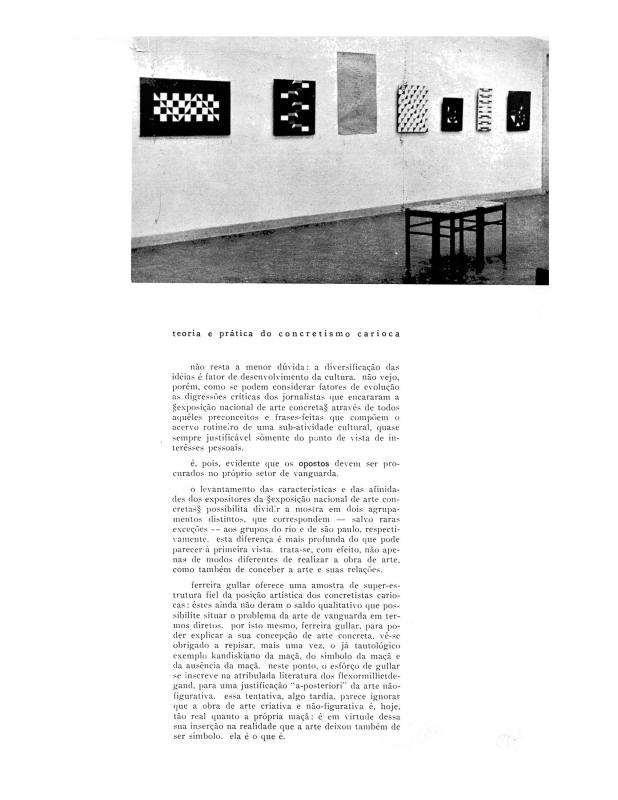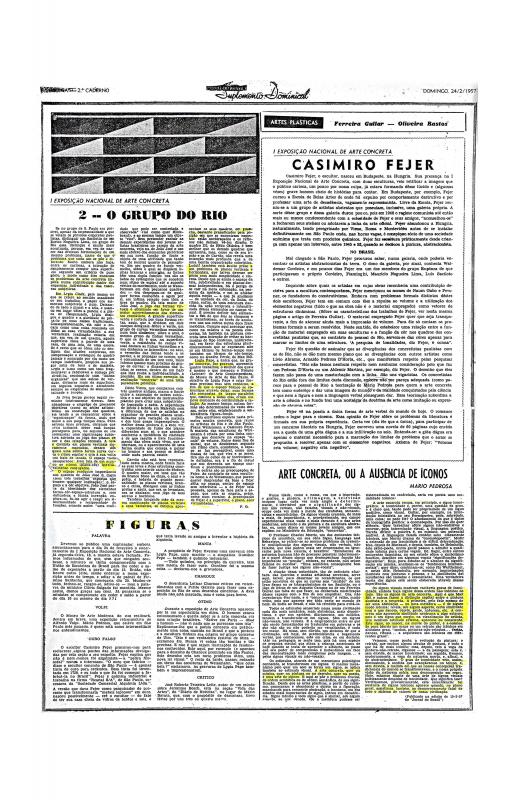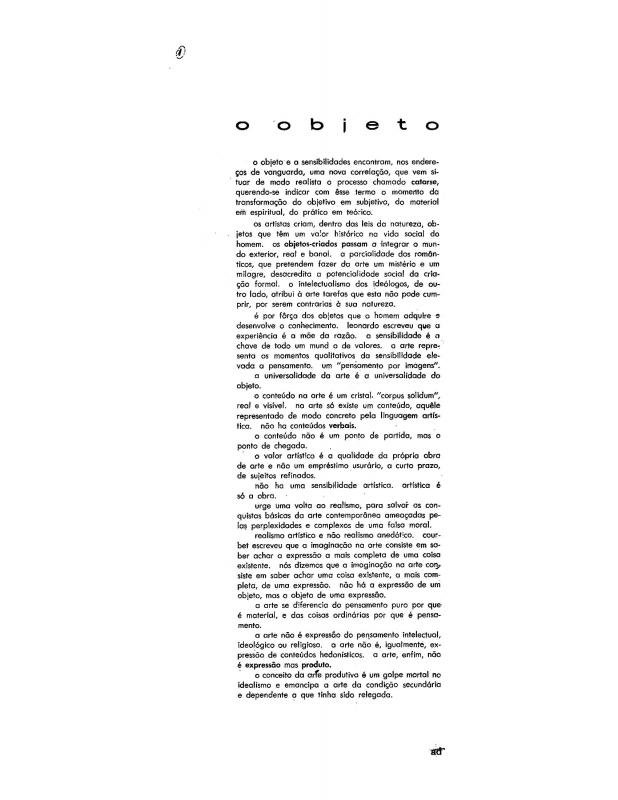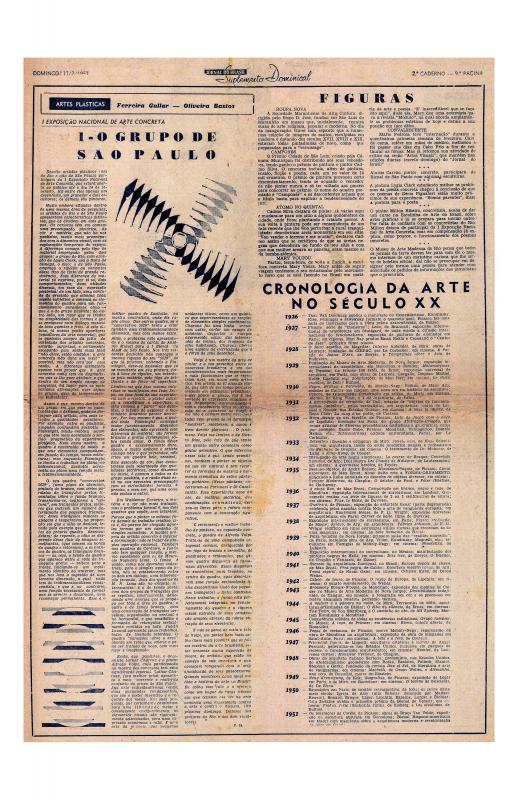This essay was published on the occasion of the I Exposição Nacional de Arte Concreta, the event that was held in December 1956 at the Museu de Arte Moderna de São Paulo. The exhibition was subsequently (in January and February of the following year) taken to Rio de Janeiro, where it was installed in the most important building in modern Brazilian architecture, the Ministério da Educação e da Saúde. In the wake of this peripatetic experience, the exhibition began to expose differences—that soon became insurmountable—between groups and movements associated with concrete art, on one side, and what, some years later, would be known as “neo-concrete art,” on the other. Over time, these differences drove a wedge between the two cities involved. In Rio de Janeiro the group’s spokesman on both poetry and the visual arts was Ferreria Gullar. São Paulo artists were led by the brothers Augusto and Haroldo de Campos and their Grupo Noigandres, with Décio Pignatari representing the poets and the theoretician, art critic, interior designer, and visual artist Waldemar Cordeiro representing the painters.
Despite its favorable perspective, the essay by the poet, playwright, essayist, and art critic [José Ribamar] Ferreira Gullar (b. 1930) prompted a rebuttal from Waldemar Cordeiro (1925–73), who disputed Gullar’s theoretical definitions of concrete art. At that time Gullar was impressed with the “concrete” approach, though his essay emphasized the historical-cultural context of the work of art as its key feature, whereas Cordeiro saw it as a universal and autonomous language. Gullar accepted concrete art as an autonomous reality, but believed it was associated with the scientific ideas or axiology of values of contemporary culture.
Some time later, Cordeiro roundly challenged Gullar’s views in his essay “Teoria e prática do concretismo carioca” [doc. no. 1087287]. The historic controversy that ensued between Concretismo (São Paulo) and Neoconcretismo (Rio de Janeiro) in the Brazilian press continued indefinitely, as in the following key articles: “I Exposição Nacional de Arte Concreta: 2 - O grupo do Rio” [doc. no. 1090217]; “O objeto” [doc. no. 1086891]; and “I Exposição Nacional de Arte Concreta: I - O Grupo de São Paulo” [doc. no. 1087166].




